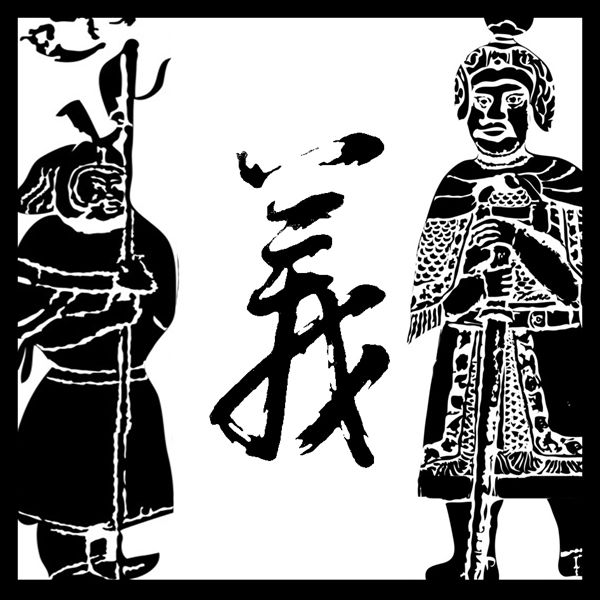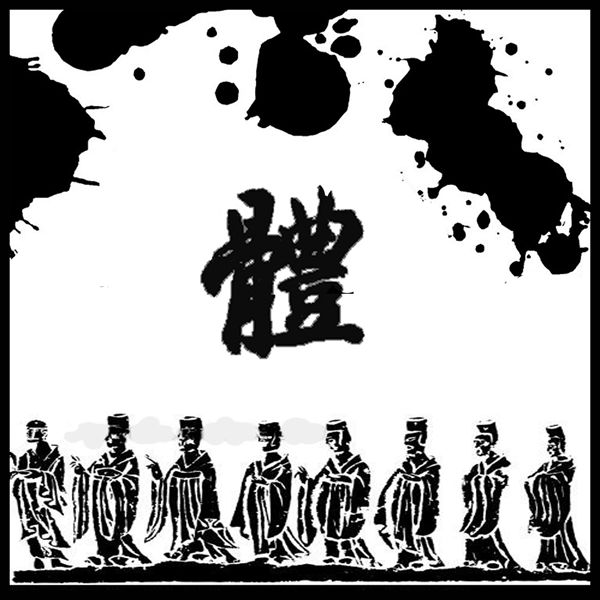引例 Citations:
义

/yì/
Righteousness
“义”的基本含义是合理、恰当,引申而有两重含义:其一,指人行事的合理依据与标准;其二,指在道德意识的判断与引导下,调节言行使之符合一定的标准,以获得合理的安处。宋代学者用“理”或“天理”的概念来解释“义”,认为“义”就是“天理”所规定的合理的标准,同时要求言行符合“天理”。
The basic meaning of yi (义) is “reasonable” and “proper.” It has two extended meanings. One is the proper basis and standard for people’s actions. The other is to adjust one’s words or deeds to meet certain standards, under the guidance of mo0ral judgments. Scholars in the Song Dynasty used li (理) or “principles of heaven” to interpret yi, and considered yi to be the reasonable standard defined by the “principles of heaven,” and hoped that people’s words and deeds would fall in line with these principles.
引例 Citations:
君子喻于义。(《论语 里仁》) (君子知晓并遵循义。)
Junzi (a man of virtue) understands things and acts in accordance with righteousness. (The Analects)
义者,心之制,事之宜也。(朱熹《孟子集注》) (义就是约束自己的内心,使事情合宜。)
Righteousness means exercising self-restraint in order to do everyting properly. (Zhu Xi: Mencius Variorum)
体

/tǐ/
Form
有“本体”“体式”“形体”等含义。“体”作为文艺学?美学范畴,主要含义有三:其一,指文学艺术的某一门类、流派、体式。作品区别于其他文学艺术门类、流派、体式、作品的整体特征。它是包含了文学艺术的体式、内容、语言、风格等诸要素在内所呈现出的总体形态与艺术特征。其二,指文学艺术作品的风格,不包括体式、形式等方面的内容。其三,指文学作品的基本体式,即文体或文学体裁。历代文论家对文体的分类不尽相同,比如南朝梁萧统《文选》将文体分为38种。中国古代文学的文体十分丰富多样,各有自己的基本样式与写作要求,而风格即是作者的艺术个性在作品中的显现,有时也表现为一个时代、一个流派的文学特征。这一术语经常与人名、朝代名等结合,如骚体、陶体、建安体等,用来指称与作品风格相关的艺术特征并广泛运用于文艺批评与鉴赏中。
Ti (体), which generally refers to bodies, shapes, and the forms of characters, has three different meanings in the study of literature, art, and aesthetics. First, it refers to the features that distinguish one particular category, form, or school of literary works from others. These features represent the overall form and artistic characteristics, including the structure, content, language, style, and other essential elements. Second, it can refer to only the style of literary and artistic works, not their form or shape. Third, it can refer to the basic form of literary and artistic works, i.e., the writing style and literary genre. Scholars of literary theory in different historical periods did not use the same standards to classify the styles of literary works. For example, Xiao Tong of the Southern Liang proposed to classify literary and artistic works into 38 styles or categories in his Literary Anthology. There is a wide range of writing styles and literary genres in Chinese classical literature, each with basic style and writing requirements. It is believed that the style of a literary work reflects the author’s individual artistic character and sometimes also the literary and artistic features of a school in a particular era. This term is often used together with the name of a person or a dynasty to describe literary and artistic features relevant to a particular school of literature. Examples are the Sao Style (represented by the signature poem, Li Sao, written by famous poet Qu Yuan), the Tao Style (represented by poet Tao Yuanming), and the Jian’an Style (named after the reign period called Jian’an during the Han Dynasty). The term has been widely used in literary criticism and appreciation.
引例 Citations:
◇夫人善于自见,而文非一体,鲜能备善,是以各以所长,相轻所短。(曹丕《典论 论文》)
(人总是善于看到自己的优点,然而文章不止一种体式,很少有人擅长所有体式,因此各人总是以自己所擅长的文体写作而轻视别人不擅长的文体。)
People are always quick to see their own strengths. However, given the number of styles of literary works, few people are accomplished in all the literary styles. Therefore, people always write in the styles they are good at while underestimating others’ works written in the styles they happen to be weak in. (Cao Pi: On Literary Classics)
◇自汉至魏,四百余年,辞人才子,文体三变。(《宋书 谢灵运传论》)
(自汉至魏,四百多年,写诗文的才子[众多],而诗文的体式风格,也经历了三次大的变化。)
For more than 400 years from the Han to the Wei dynasties, there had been numerous talented poets and three major transformations in poetic styles. (The History of Song)
Selected from Key Concepts in Chinese Thought and Culture published by Foreign Language Teaching and Research Press.